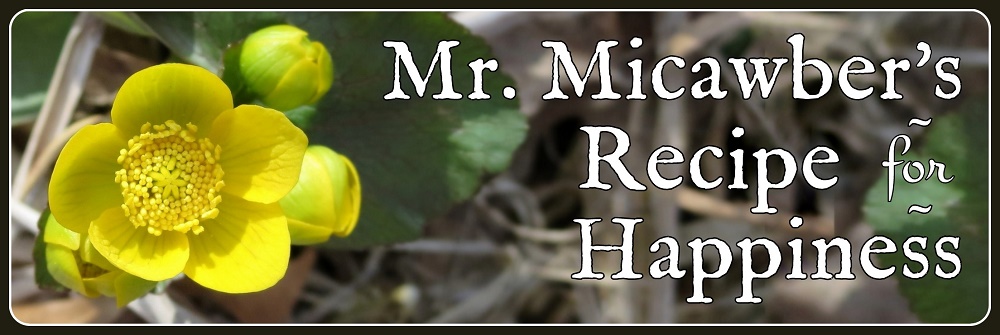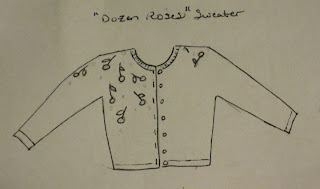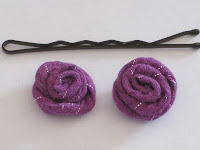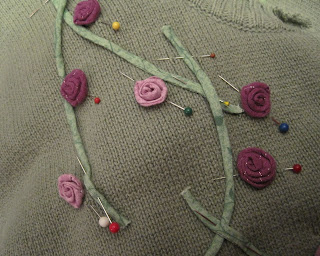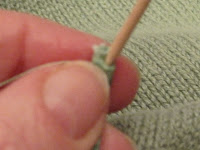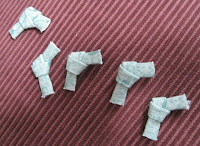I love to read about baking the way some people love to read about fashion. (Offer me a Vogue magazine or a King Arthur's catalogue, and I'll always choose King Art.) Sometimes I daydream of baking my way (a la Julie and Julia) through some glutenous masterpiece like The Cake Bible or Crust & Crumb, garnering plaudits and praise from friends and family alike. Alas, there are no little Micawbers to eat these creations, half my immediate family is gluten-intolerant, and the annual income does not support the regular production of Neo-Classic Buttercream or the construction of a wood-fired brick oven. (Nor would our landlord appreciate the last.) And the exigencies of everyday life can limit the time and ingredients available for tinkering in the kitchen.
So I save the specialty breads and spectactular cakes for rare and special occasions, and in the meantime fall back on tried-and-true recipes that I can put together easily--the blue jeans of baking, if you will. Here's one of them. It's our everyday, workhorse, basic bread recipe; flexible, forgiving, and reliable. It can be started the night before baking, or the morning of the day on which you'd like to eat it. As with any really good bread recipe, the time from start to finish can seem long (6-24 hours), but the periods of active work are brief. We love this bread, and I hope you will too.
Mrs. Micawber's Daily Bread - Makes 2 large or 3 medium loaves
Starter (if you have a stand mixer, make the starter in the mixer bowl)
Dissolve 3/4 teaspoon yeast in 3/4 cup warm water
Stir in 1-1/2 cups unbleached flour
Cover and let sit for 3-24 hours. It will get nice and bubbly, like this:
Dough
To starter, add:
3 teaspoons active dry yeast (for the quickest rise; 1-1/2 teaspoons if you're not in a hurry)
1-1/2 cups warm water
2 tablespoons oil (optional)
1 tablespoon brown sugar or 1 teaspoon honey (optional)
Stir the above a few times, then add:
600 grams* flour of your choice**
2 teaspoons salt
*I'm sorry I can't give volume measurements here - weighing the flour is the most reliable way to keep the integrity of the recipe. If you take your breadbaking seriously and plan to do it regularly, a little kitchen scale is worth the investment. I got mine about 15 years ago for around $11 on sale and it has been invaluable. Check Target, Amazon, or your local kitchen store and you should be able to find a good deal. If you live on a Micawber-like income and just can't afford one, ask for it as a birthday or Christmas gift.
**I usually use about 300-400 grams whole-wheat flour and 100-200 grams unbleached flour or semolina flour. Sometimes I include old-fashioned oatmeal as one of the "flours". You can use whatever combination you like, as long as the total weight is 600 grams, at least half of which should be gluten-containing flour. The dough in these pictures was made with whole-wheat and semolina flours.
If desired, add some seeds at this point. Suggestions include:
Sunflower seeds
Flax seeds
Sesame seeds
Millet
I don't measure the seeds - I just put in a handful or two of whatever's handy. Today it was flax seed (DH had eaten all the sesame and sunflower seeds and neglected to tell me we were out).
Knead for 7-8 minutes until dough is smooth and elastic, with tiny bubbles under the surface. It will still be slightly moist and tacky, but that's okay. As the Italians say, the wetter the dough, the better the bread.
After kneading (and removing the dough hook), cover the bowl and leave the dough alone until it doubles in size. This may take anywhere from 45 minutes to 2 hours.
Turn the dough out onto a floured surface and cut into 2 or 3 portions. I use my handy-dandy bench scraper for this (it goes by the charming name of Bash'N'Chop and works wonders for cutting dough, flipping pie crust, and cleaning sticky countertops).
Shape 1 portion at a time into a round or oblong loaf. I like James Beard's method (from Beard on Bread) for shaping the dough: Instead of rolling it out with a rolling pin, you just roll it into a ball, turn it 90 degrees, then roll again, about 6-8 times. Then pinch shut any open areas. If you want a round loaf, you can stop here, flip it over, and place it on the baking pan. If you like an oblong loaf, as I do, then gently roll it from the long side, pinch, roll again, pinch again, occasionally tucking the ends up and in, until it reaches the length you like. Then flip it over and put it on your pan. Since a picture is worth a thousand words, I've included a little video to demonstrate this method (this is a silent movie, so no need to turn up the volume):
Unfortunately my memory card filled up and the camera stopped before I could finish the process. But you get the general idea.
Place dough on greased baking sheet. If you have a silicone mat, by all means use it (no need for greasing in that case). You can also use parchment paper, although it will crinkle up a bit under the dough during baking.
 |
| Newly formed loaves |
Cover the dough. (I like to use 2 plastic grocery bags, sliding one over each end of the pan, so they overlap in the middle.) Place pan in warm spot until loaves have doubled in size, about 45-60 minutes. When your loaves have been rising for about 25 minutes, turn the oven on to 400º, and get 6-8 ice cubes ready in a bowl in your freezer.
 |
| Doubled and ready to bake |
 |
| Ice cubes ready to go |
When oven is hot and dough has doubled, remove the plastic bags and slash the tops of the loaves about 3/4 - 1" deep (I use my bread knife for this).
Put the pan near the oven. Get your bowl of ice cubes out of the freezer and throw them in the oven, then put the pan in and shut the door quickly to keep in the steam.
Bake loaves for 30 minutes at 400º, then 10 minutes at 375º. Remove from oven and place on a cooling rack. Try to wait 20 minutes before cutting into one. Then enjoy your fresh home-baked bread!
P.S. I store my bread in leftover plastic produce bags from the supermarket. I put the bagged extra loaves in a regular plastic grocery bag and freeze them. To thaw, remove loaf from produce bag. Turn produce bag inside-out so any moisture can evaporate (this helps avoid mold when you re-bag your thawed bread). Thaw bread on countertop for an hour or two.
